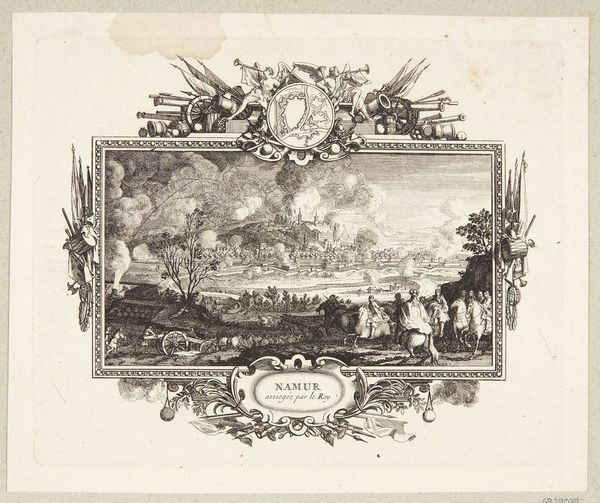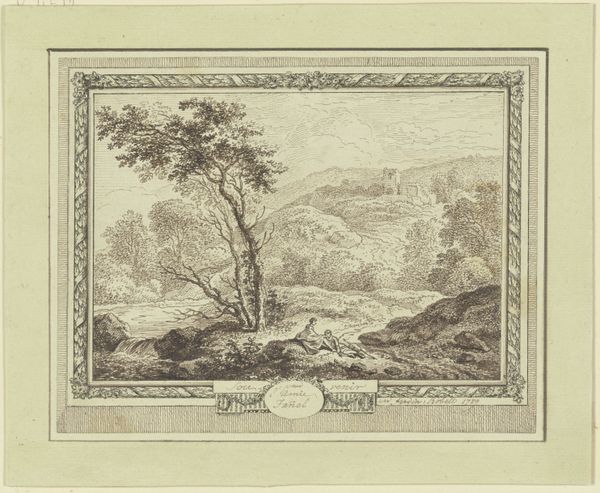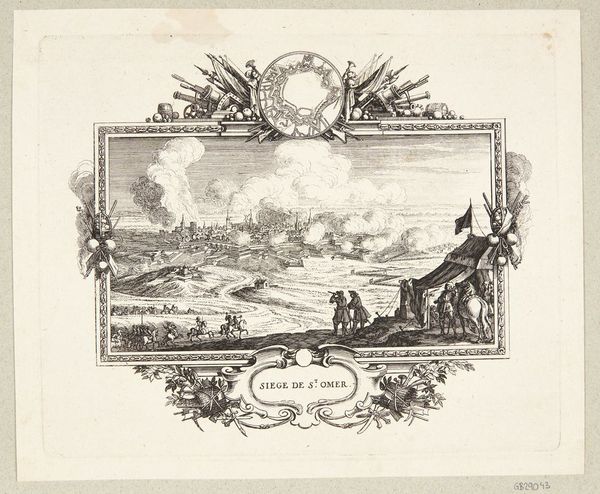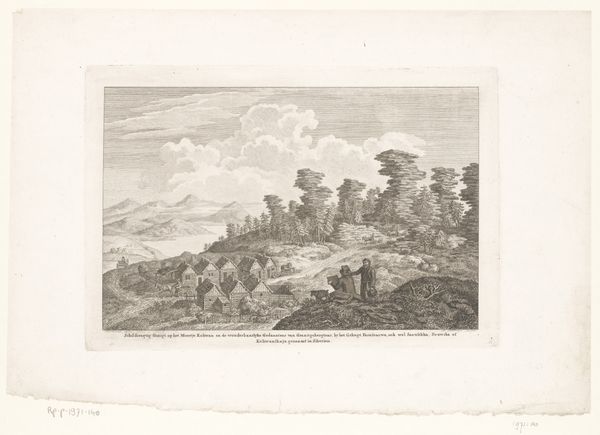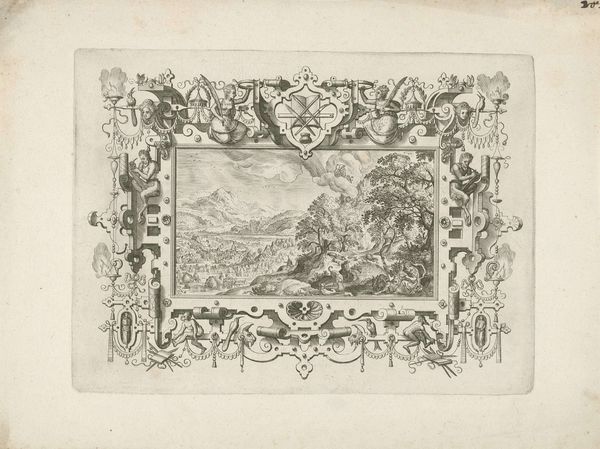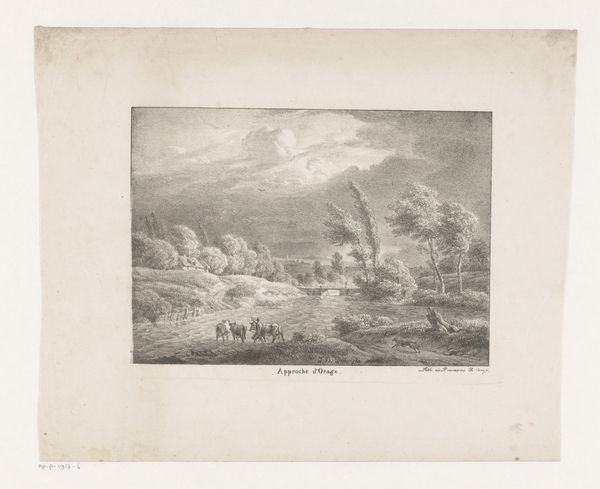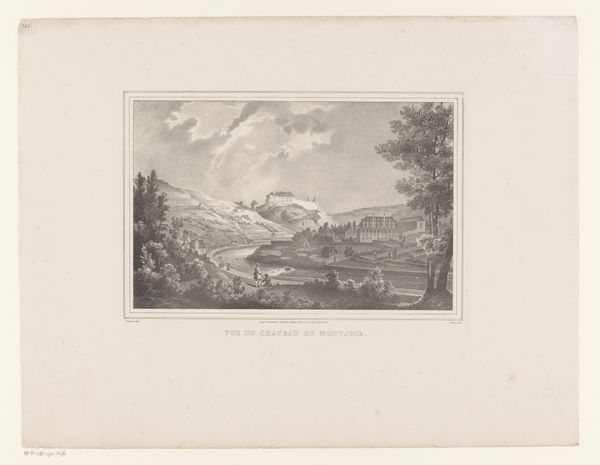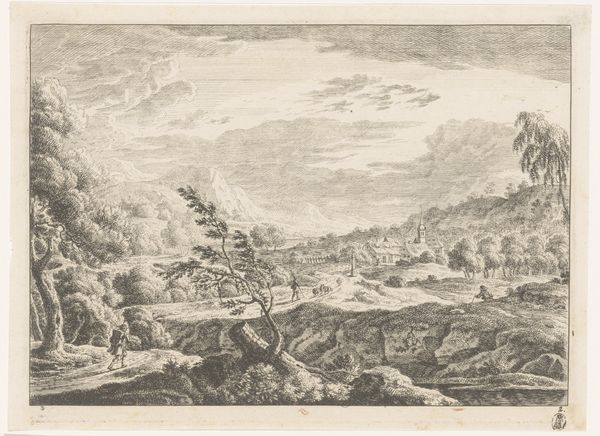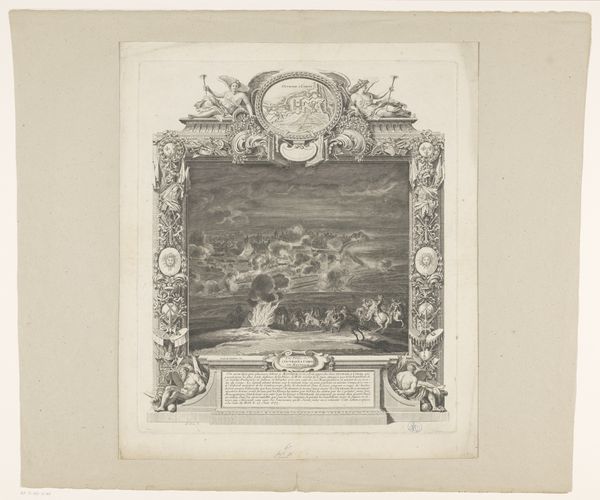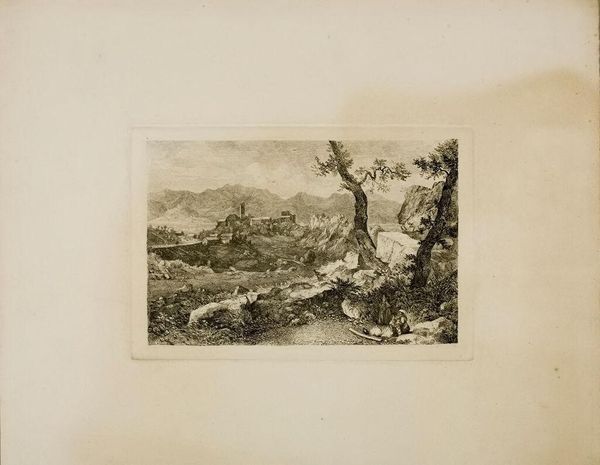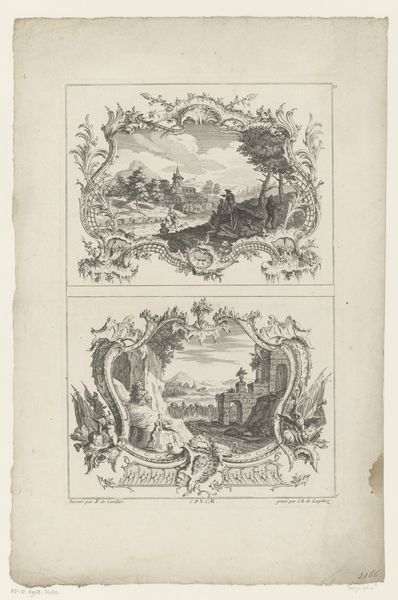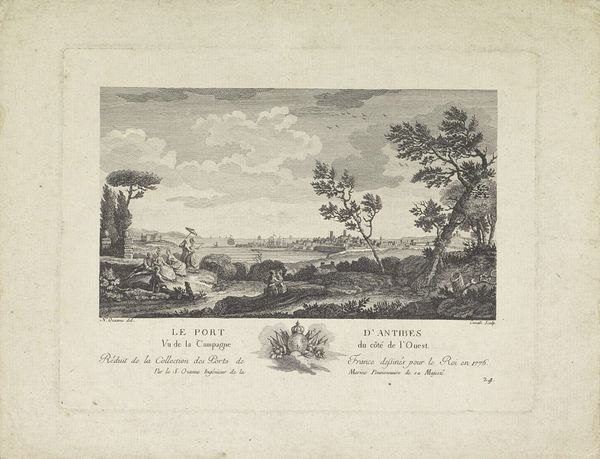
Belejringen af Dinant (Siège de Dinant) 1703 - 1717
0:00
0:00
print, etching
#
baroque
# print
#
etching
#
landscape
#
cityscape
#
history-painting
Dimensions: 163 mm (height) x 201 mm (width) (plademaal)
Curator: This etching, dating from the early 18th century, depicts "The Siege of Dinant," an image attributed to Johanna Sibylla Küsel. The work is part of the collection here at the SMK. What catches your eye about it? Editor: Oof, it's intense. I mean, all those explosions, and that imposing landscape. The etching really conveys a sense of destruction but in a stylized way, like a stage set for a war scene. I wonder, does this framing emphasize the... glorification of war? Curator: You pick up on an interesting duality. The framing itself – those Baroque embellishments, weaponry, even a map–they serve to elevate and memorialize. However, that central scene...the etching itself seems grounded in the visual language designed to convey realness. I find that the symbols in this piece work almost as a counterpoint to the destructive realities shown. Editor: It’s that dance that pulls me in – the ornamentation almost mocking the chaos. Like a gilded cage around a catastrophe. Makes you think about the psychology of recording history, right? This desire to package the grim stuff neatly. It almost feels naive, celebrating what should be remembered as terrible. Curator: Indeed. The cityscape itself acts as a powerful symbol. A vulnerable point besieged, enduring, yet destined to carry the scars of the event. The composition directs your eyes between that vulnerability and the... somewhat indifferent frame around the destruction. Look closer at how figures in the lower foreground seem small compared to the imposing cliff face. What emotional weight do you find that adds to it? Editor: Yeah! A little detached, right? Like they’re spectators as much as participants. Okay, now that you point out, all this visual emphasis on the sheer overwhelming scale...and all of this visual violence, seems staged precisely to evoke something of our own helplessness. In fact, to that point about spectatorship... I feel kind of guilty gazing into a spectacle that I know actually involved so much human suffering, it's not a gladiator film! Curator: That disquiet is potent. This print and others like it circulated widely. They acted as a form of media that could shape the contemporary narrative around conflict. And beyond that, what collective memories might that build and preserve? Editor: Gosh. I came in expecting to find some old depiction of war, but I see a carefully crafted image meant to stick. All those carefully selected symbols! Very insidious and not exactly "truthful". Thanks. Now I feel I'm prepared to examine war photojournalism or anything of the kind without repeating past mistakes!
Comments
No comments
Be the first to comment and join the conversation on the ultimate creative platform.
